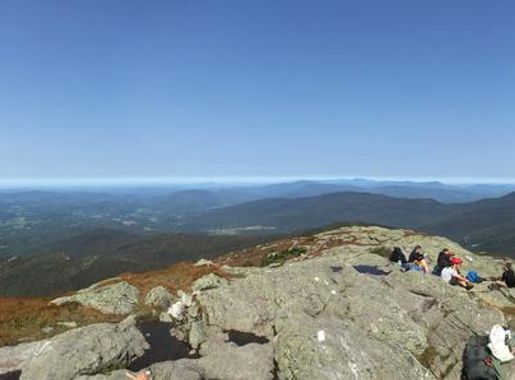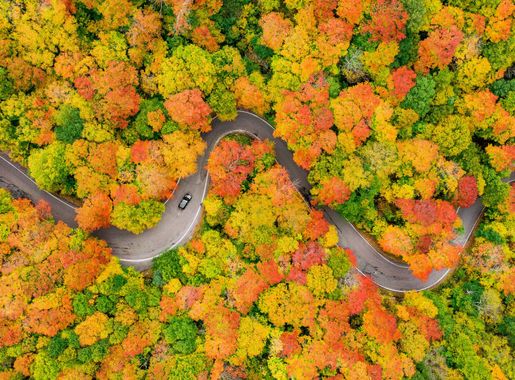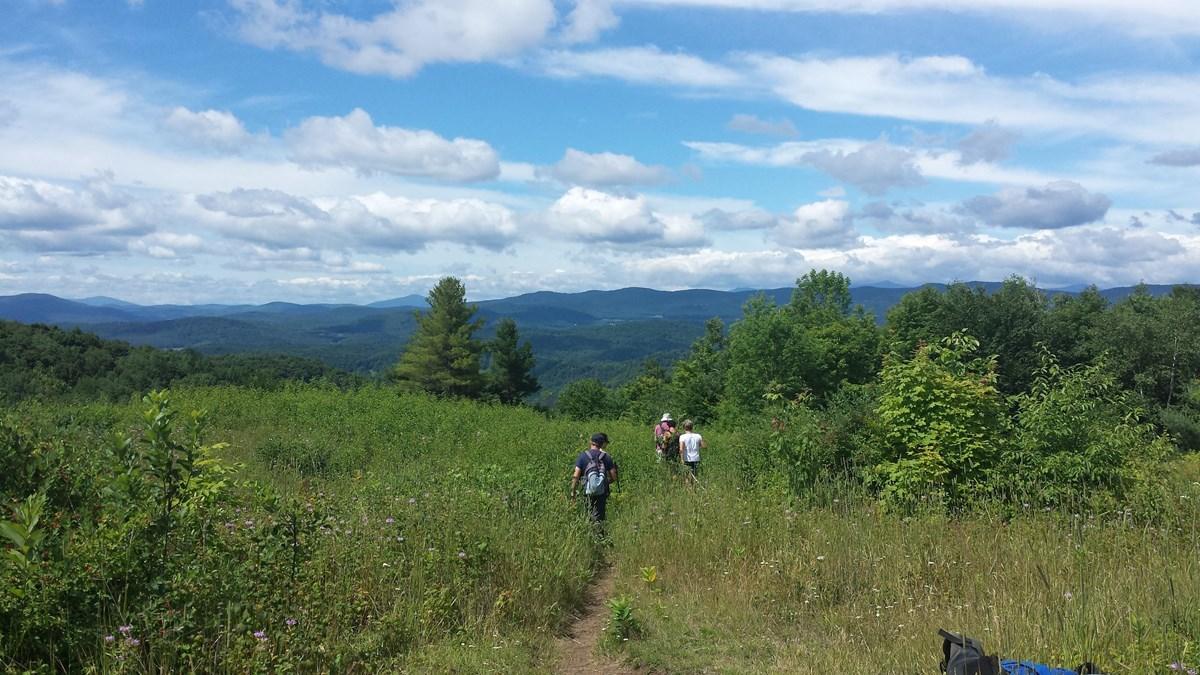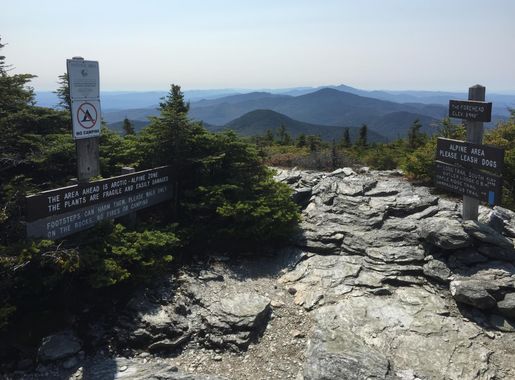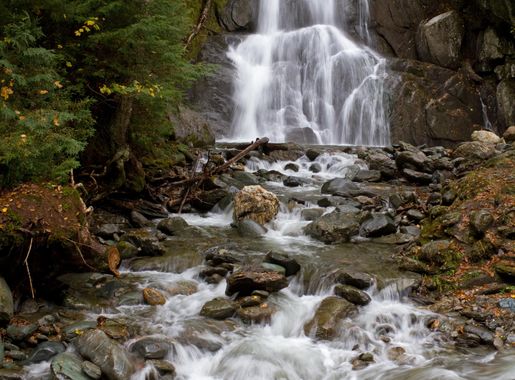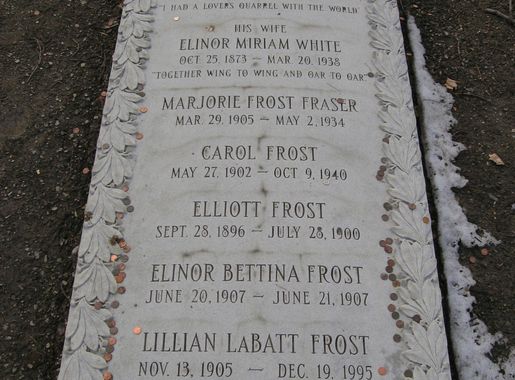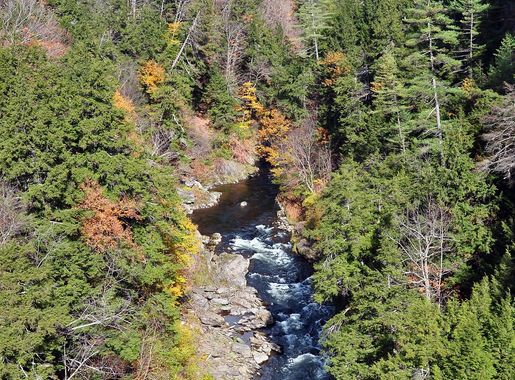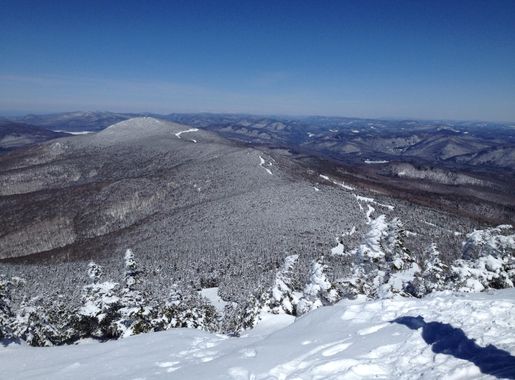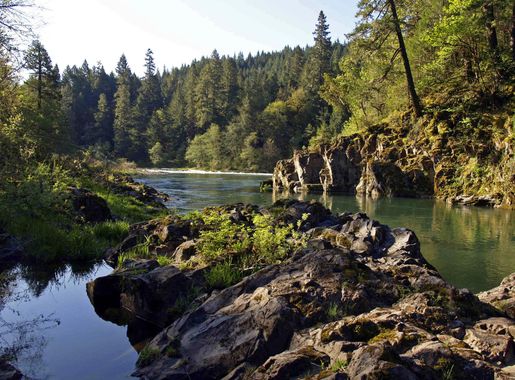
The Enchanting Green Mountains National Forest
Discover the Green Mountains National Forest: A Vermont Gem of Scenic Trails, Abundant Wildlife, and Year-Round Natural Beauty
Nestled in the heart of Vermont, the Green Mountains National Forest is a haven for nature lovers and adventure seekers alike. Spanning over 400,000 acres, this lush forest offers a stunning backdrop of rolling hills, serene lakes, and dense woodlands, making it a perfect escape from the hustle and bustle of city life. Whether you visit in the vibrant colors of fall, the lush greens of summer, or the snowy wonderland of winter, the Green Mountains promise an unforgettable experience. The forest is crisscrossed with an extensive network of trails suitable for every type of hiker, from the casual stroller to the seasoned trekker. The Long Trail, which runs the length of Vermont, offers challenging hikes with rewarding panoramic views. For those who prefer a more leisurely pace, the Robert Frost Interpretive Trail provides a gentle walk through picturesque landscapes inspired by the poet's work. Wildlife enthusiasts will delight in the chance to spot a variety of animals, including white-tailed deer, black bears, and a myriad of bird species. The forest's diverse ecosystem is also home to many rare plants and wildflowers, adding to its rich natural tapestry. Don't forget to bring your camera to capture the breathtaking vistas and the serene beauty of this natural paradise.
Local tips in Green Mountains National Forest
- Check the weather before you go; conditions can change rapidly in the mountains.
- Visit in the fall for the most spectacular foliage views.
- Wear sturdy hiking boots, especially if you plan on tackling the longer trails.
- Bring insect repellent in the summer to ward off mosquitoes and ticks.
- Consider downloading a trail map or bringing a GPS device, as cell service can be spotty in remote areas.
The Enchanting Green Mountains National Forest
Nestled in the heart of Vermont, the Green Mountains National Forest is a haven for nature lovers and adventure seekers alike. Spanning over 400,000 acres, this lush forest offers a stunning backdrop of rolling hills, serene lakes, and dense woodlands, making it a perfect escape from the hustle and bustle of city life. Whether you visit in the vibrant colors of fall, the lush greens of summer, or the snowy wonderland of winter, the Green Mountains promise an unforgettable experience. The forest is crisscrossed with an extensive network of trails suitable for every type of hiker, from the casual stroller to the seasoned trekker. The Long Trail, which runs the length of Vermont, offers challenging hikes with rewarding panoramic views. For those who prefer a more leisurely pace, the Robert Frost Interpretive Trail provides a gentle walk through picturesque landscapes inspired by the poet's work. Wildlife enthusiasts will delight in the chance to spot a variety of animals, including white-tailed deer, black bears, and a myriad of bird species. The forest's diverse ecosystem is also home to many rare plants and wildflowers, adding to its rich natural tapestry. Don't forget to bring your camera to capture the breathtaking vistas and the serene beauty of this natural paradise.
When is the best time to go to Green Mountains National Forest?
Iconic landmarks you can’t miss
Long Trail State Forest
Explore the breathtaking beauty of Long Trail State Forest, a national forest in Vermont known for its stunning hiking trails and diverse wildlife.
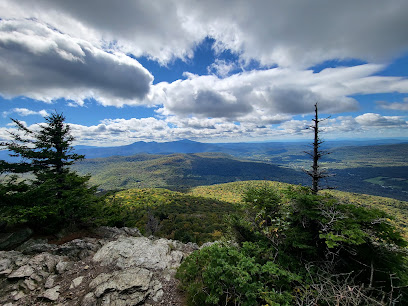
Audubon Vermont: Green Mountain Audubon Center
Explore the Green Mountain Audubon Center in Vermont for a perfect blend of serenity, wildlife, and environmental education amidst stunning natural landscapes.
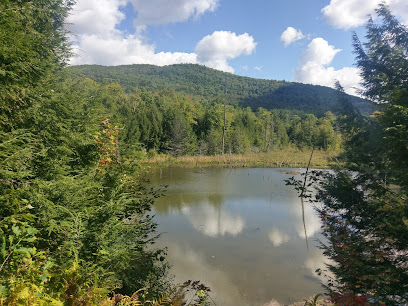
Green Mountain National Forest
Explore the breathtaking landscapes and diverse wildlife of Green Mountain National Forest, Vermont's premier outdoor adventure destination.
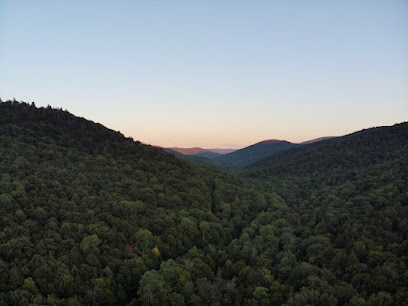
Green Mountain National Forest - Rochester Ranger Station
Immerse yourself in the natural beauty of Green Mountain National Forest, Vermont's scenic wonderland for outdoor adventures and tranquility.
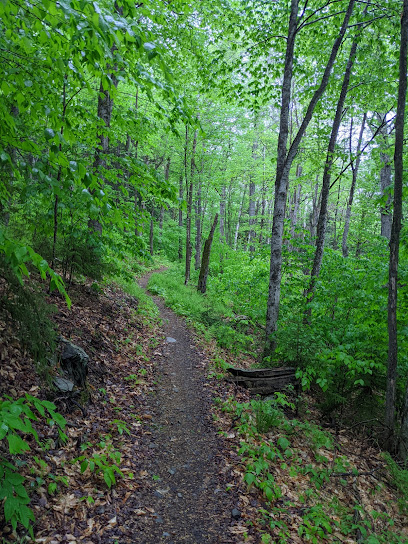
Green Mountain National Forest Manchester Ranger Station
Explore the Green Mountain National Forest at Manchester Ranger Station, a paradise for outdoor enthusiasts with stunning landscapes and ample recreational activities.
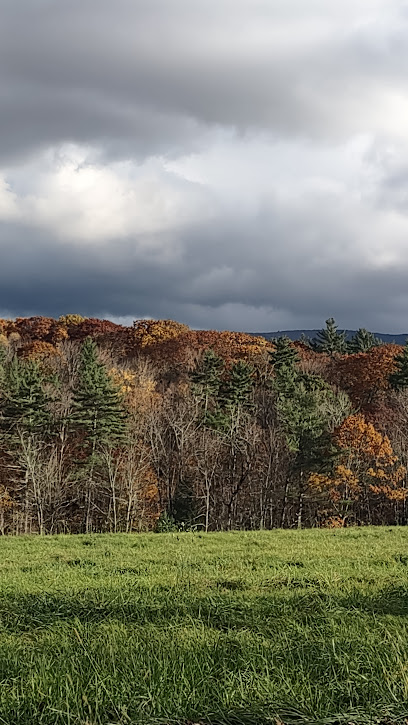
Unmissable attractions to see
Sugarbush Farm
Discover the flavors of Vermont at Sugarbush Farm, where artisanal cheeses and maple syrup await amid breathtaking mountain views.

Bennington Battle Monument
Discover the Bennington Battle Monument, a historic landmark and towering tribute to American independence, offering stunning views and rich heritage.
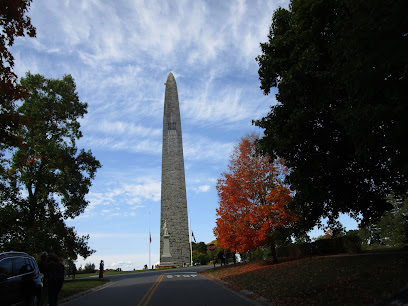
Sugarbush Resort
Discover the thrilling slopes and stunning scenery of Sugarbush Resort, a top destination for skiing, hiking, and year-round outdoor adventures in Vermont.
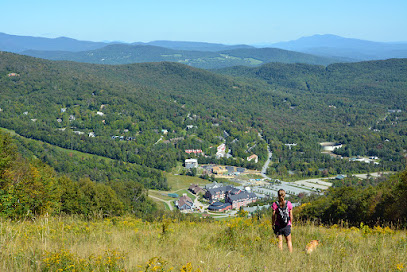
Hildene, The Lincoln Family Home- Welcome Center
Explore Hildene, the Lincoln Family Home, a captivating historical site blending rich heritage, stunning gardens, and engaging exhibits in Vermont.
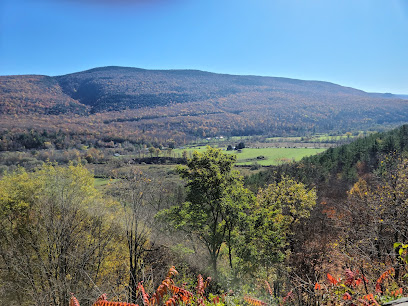
Quechee State Park
Explore the stunning beauty of Quechee State Park in Vermont, a perfect blend of outdoor adventure and serene landscapes for all nature lovers.
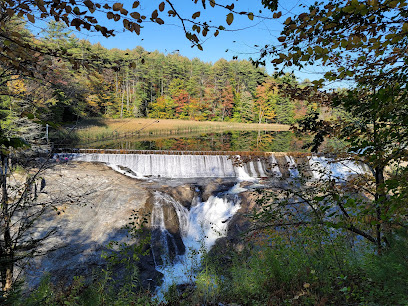
Emerald Lake State Park
Explore Emerald Lake State Park, a serene haven in Vermont perfect for outdoor adventures, wildlife viewing, and peaceful relaxation amidst stunning nature.
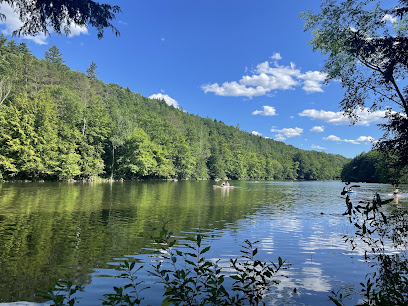
Mt Ascutney State Park
Experience the breathtaking views and outdoor adventures at Mt Ascutney State Park, a true Vermont treasure for nature lovers and adventurers.
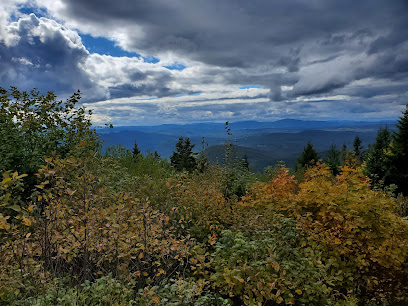
Camel's Hump State Park
Explore the stunning landscapes and diverse trails of Camel's Hump State Park, a must-visit destination for nature lovers in Vermont.
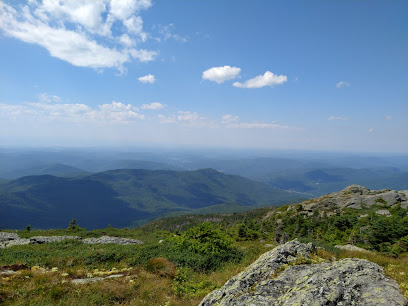
Pine Hill Park
Discover the beautiful trails and serene landscapes of Pine Hill Park in Rutland, Vermont—an outdoor paradise for nature lovers and adventure seekers.
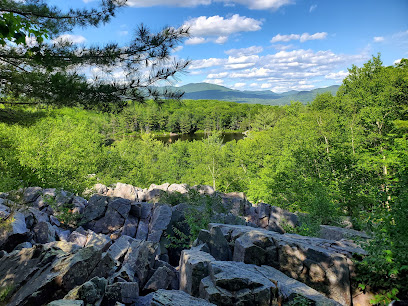
Camp Plymouth State Park
Experience the charm of Camp Plymouth State Park: a perfect blend of outdoor fun and natural beauty in Vermont.
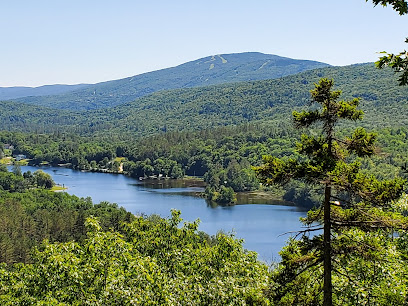
Woodchuck Cider
Experience the art of cider making at Woodchuck Cider, where local flavors and craftsmanship come together in scenic Vermont.
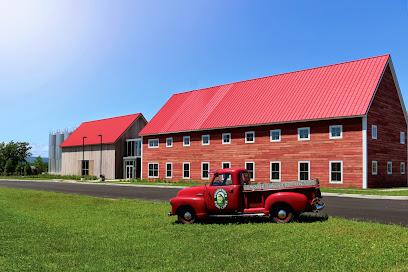
Elmore State Park
Experience the natural beauty and outdoor adventures at Elmore State Park, Vermont's premier destination for relaxation and recreation.
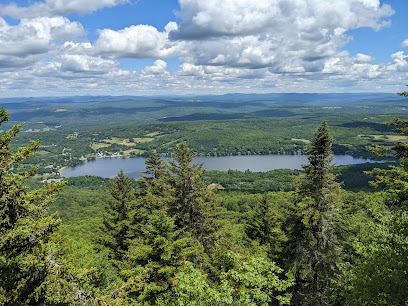
Bennington Museum
Explore the Bennington Museum, where local history, art, and culture come alive in the heart of Vermont.
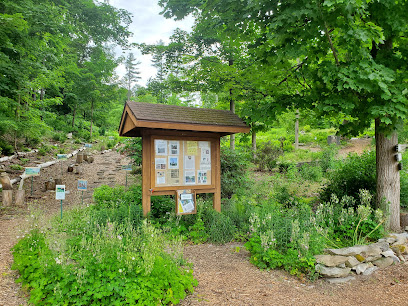
Ramshead Lodge
Experience the thrill of skiing at Ramshead Lodge in Killington, Vermont, where adventure meets breathtaking mountain views and cozy après-ski relaxation.
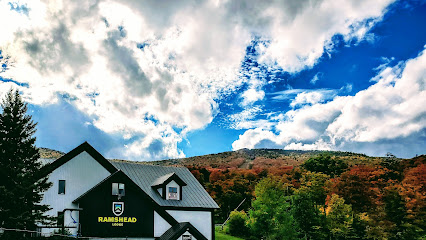
Hubbard Park
Explore the tranquil trails and scenic views of Hubbard Park in Montpelier, Vermont, a perfect escape for nature lovers and outdoor enthusiasts.

Essential places to dine
Green Mountain National Forest
Discover the breathtaking landscapes and endless outdoor adventures at Green Mountain National Forest in Vermont.
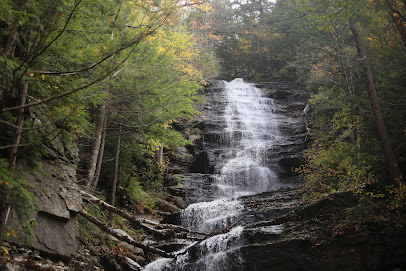
Simon Pearce
Discover Simon Pearce in Quechee: where exquisite American cuisine meets stunning artisanal craftsmanship amidst breathtaking river views.
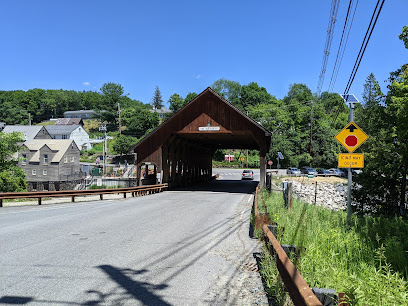
Subway
Experience delicious customization with fresh ingredients at Subway in White River Junction - perfect for quick meals on your travels.

Green Mountain National Forest - Rochester Ranger Station
Explore the beauty of Green Mountain National Forest at Rochester Ranger Station—your gateway to Vermont's stunning wilderness.

Markets, malls and hidden boutiques
Green Mountain National Forest
Experience the breathtaking beauty and adventure of Green Mountain National Forest, Vermont's premier destination for nature lovers and outdoor enthusiasts.
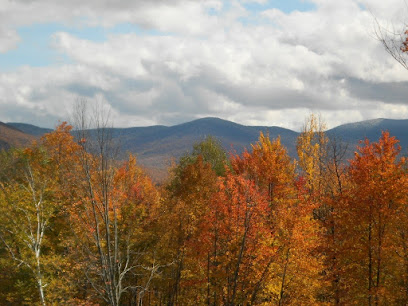
Hogback Mountain Country Store
Explore the charm of Hogback Mountain Country Store - a delightful gift shop showcasing Vermont's finest local products and artisanal treasures.

Green Mountain Shopping Plaza
Explore the Green Mountain Shopping Plaza in Rutland, Vermont—a vibrant retail hub with diverse shopping, dining, and entertainment options for every visitor.

Vermont Antique Mall
Uncover hidden gems and vintage treasures at Vermont Antique Mall in Quechee, a delightful destination for antique lovers and treasure seekers.
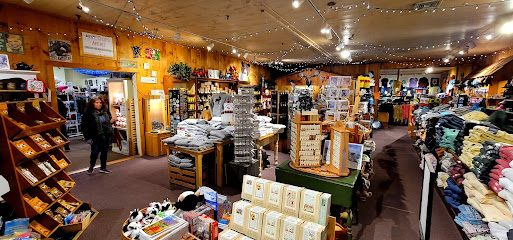
Michaels
Explore your creativity at Michaels in Rutland, Vermont – your one-stop destination for craft supplies, workshops, and seasonal décor.

Green Mountain Sugar House
Explore the charm of Vermont at Green Mountain Sugar House, offering local gifts, delicious maple syrup, and a taste of New England craftsmanship.
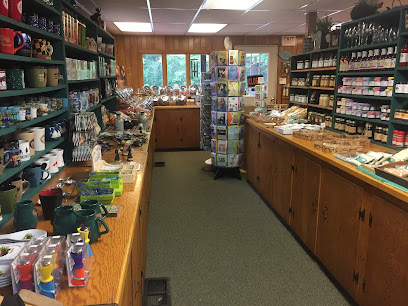
Mountain Girl Cannabis
Discover the vibrant world of cannabis at Mountain Girl Cannabis in Rutland, Vermont – your go-to destination for quality products and expert advice.

First Stop Board Barn - Ski, Bike, Snowboard & Paddle Shop
Discover outdoor adventures at First Stop Board Barn, the ultimate ski, bike, and snowboard shop in Killington, Vermont.

Somewhere On The Mountain
Explore holistic wellness at Somewhere On The Mountain, a top cannabis store in Rutland, Vermont, offering quality products and education for your herbal journey.
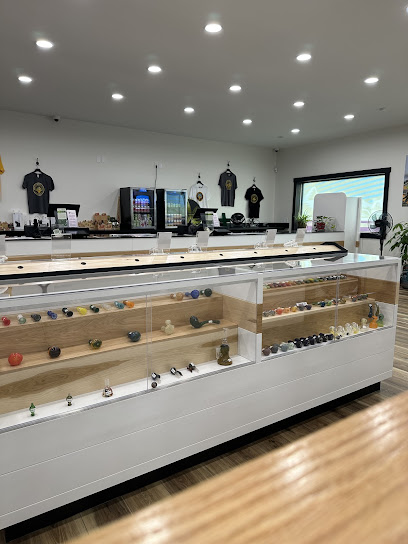
Mountain Music
Discover a melodic treasure trove at Mountain Music in Rutland, Vermont, where vinyl meets vibrant jewelry and home audio wonders.

Camille's Experienced Clothing
Explore a treasure trove of vintage clothing and unique costumes at Camille's Experienced Clothing in Rutland, Vermont.

Original General Store
Experience the charm of Vermont at the Original General Store, a delightful stop for unique local products and delicious deli treats.
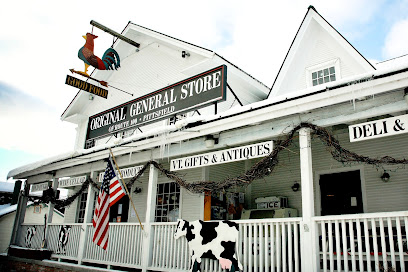
The Curiosity Shop
Explore The Curiosity Shop in Rutland, VT for unique gifts, antiques, and thrift store finds that capture the essence of Vermont's charm.

The Great Moose Vermont Shop
Discover unique Vermont souvenirs and local crafts at The Great Moose Vermont Shop, a must-visit gift shop in West Dover.
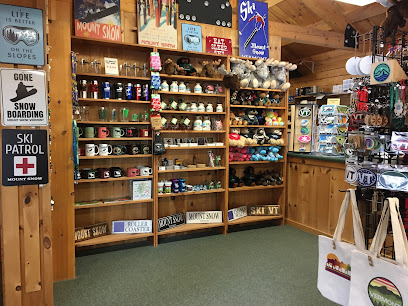
Unicorn
Explore the enchanting Unicorn Gift Shop in Woodstock, Vermont, your destination for unique gifts and local artisan treasures.
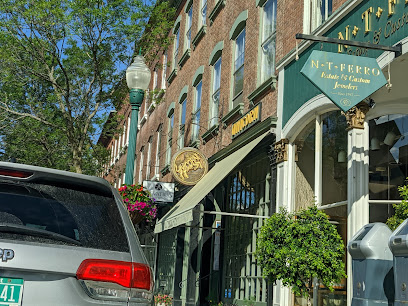
Essential bars & hidden hideouts
Maple Sugar & Vermont Spice
Experience the flavors of Vermont at Maple Sugar & Vermont Spice, where breakfast meets local charm in a cozy setting.
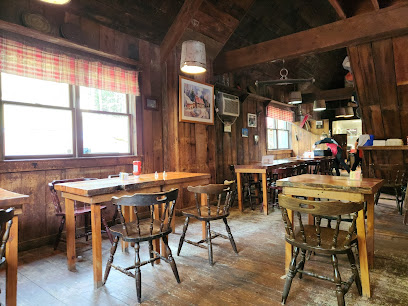
The Lookout Tavern
Discover the perfect blend of local flavors and vibrant atmosphere at The Lookout Tavern in Killington, Vermont.

Vermont Tap House
Experience delicious pizzas and craft beers at Vermont Tap House, a must-visit culinary haven in Rutland, Vermont.
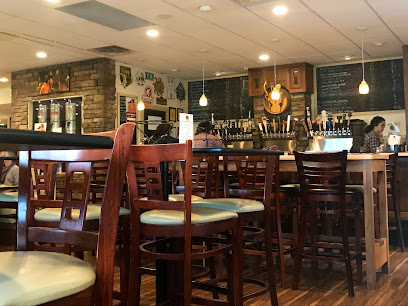
Applebee's Grill + Bar
Discover a delightful American dining experience at Applebee's Grill + Bar in Rutland, Vermont, perfect for families and food lovers.
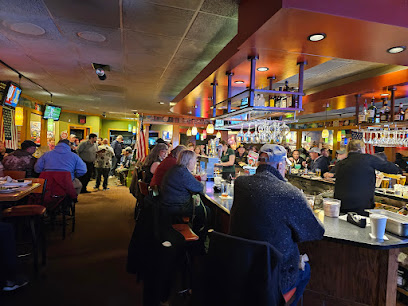
Mountain Top Resort
Discover the perfect blend of adventure and relaxation at Mountain Top Resort, where Vermont's natural beauty meets luxurious comfort.

The Foundry at Summit Pond
Discover the perfect blend of fine dining and live music at The Foundry at Summit Pond, where culinary delights meet vibrant entertainment in Killington.
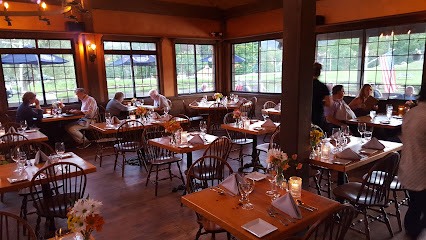
Hop'n Moose
Experience the perfect blend of hearty grill favorites and craft brews at Hop'n Moose in Rutland, Vermont - a culinary delight for every traveler.

Casey's Caboose
Discover the charm of Casey's Caboose, a premier seafood and steakhouse bar in Killington, where local flavors meet a cozy atmosphere.
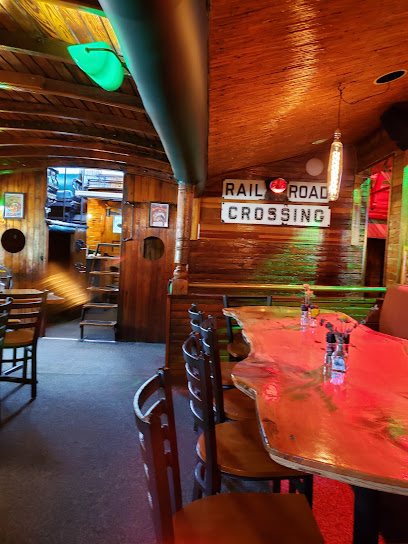
JAX Food & Games
Discover JAX Food & Games in Killington, Vermont: a lively bar and restaurant with great food, live music, and endless entertainment options.
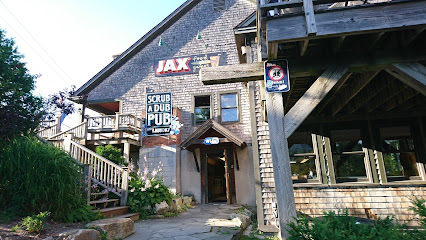
McGrath's Irish Pub
Discover the spirit of Ireland at McGrath's Irish Pub in Killington, offering traditional dishes, authentic beers, and warm hospitality.

Charity's 1887 Saloon
Discover Charity's 1887 Saloon in Killington, Vermont – a perfect blend of rustic charm, delicious food, and a vibrant atmosphere for all visitors.
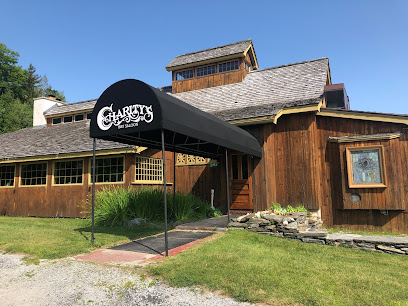
Rustic Rooster
Experience the warmth and flavor of Rustic Rooster, a charming American restaurant in the heart of Vermont offering locally inspired dishes.

Clear River Tavern
Experience the heart of Vermont at Clear River Tavern, where local flavors and warm hospitality come together in a cozy dining atmosphere.
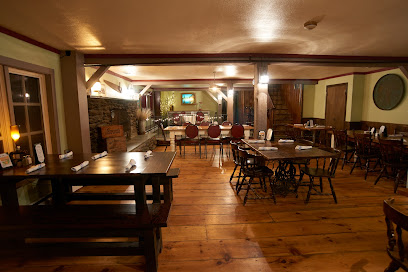
Red Clover Inn
Discover the enchanting Red Clover Inn in Vermont, a perfect blend of rustic charm and modern comfort, ideal for relaxation and adventure.

C J's Suds South
Experience local charm at C J's Suds South in Rutland, Vermont, where great drinks and friendly vibes await you.
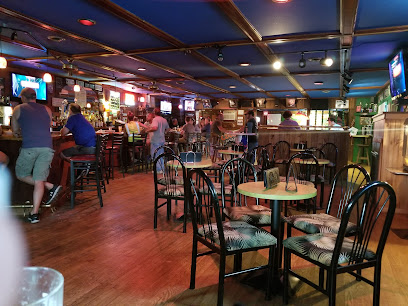
Local Phrases about Green Mountains National Forest
-
- HelloHowdy
[haʊ-di] - GoodbyeSee ya
[siː jə] - YesYup
[jʌp] - NoNah
[nɑː] - Please/You're welcomePlease and thank ya
[pliːz ænd θæŋk jə] - Thank youMuch obliged
[mʌtʃ əˈblaɪdʒd] - Excuse me/SorryPardon me
[ˈpɑːrdn miː] - How are you?How you doin'?
[haʊ juː ˈduɪn] - Fine. And you?Just dandy. You?
[dʒʌst ˈdændi juː] - Do you speak English?Y'all speak English?
[jɔːl spiːk ˈɪŋɡlɪʃ] - I don't understandI ain't catchin' on
[aɪ ˈeɪnt ˈkætʃɪn ɒn]
- HelloHowdy
-
- I'd like to see the menu, pleaseCan I peek at the grub list?
[kæn aɪ pik æt ðə ɡrʌb lɪst] - I don't eat meatI don't do meat
[aɪ doʊnt duː mit] - Cheers!Bottoms up!
[ˈbɑːtəmz ʌp] - I would like to pay, pleaseI reckon I'll settle up
[aɪ ˈrɛkən aɪl ˈsɛtl ʌp]
- I'd like to see the menu, pleaseCan I peek at the grub list?
-
- Help!SOS!
[ɛs oʊ ɛs] - Go away!Skedaddle!
[skɪˈdædəl] - Call the Police!Phone the Sheriff!
[foʊn ðə ˈʃɛrɪf] - Call a doctor!Get the sawbones!
[ɡɛt ðə ˈsɔːboʊnz] - I'm lostI'm turned around
[aɪm tɜrnd əˈraʊnd] - I'm illI'm under the weather
[aɪm ˈʌndər ðə ˈwɛðər]
- Help!SOS!
-
- I'd like to buy...I aim to purchase...
[aɪ eɪm tuː ˈpɜːrtʃəs] - I'm just lookingI'm browsin'
[aɪm ˈbraʊzɪn] - How much is it?What's the damage?
[wɑːts ðə ˈdæmɪdʒ] - That's too expensiveThat's a mighty steep price
[ðæts ə ˈmaɪti stip praɪs] - Can you lower the price?Can ya wiggle the cost down?
[kæn jə ˈwɪɡəl ðə kɔst daʊn]
- I'd like to buy...I aim to purchase...
-
- What time is it?What's the hour?
[wɑːts ðə ˈaʊər] - It's one o'clockIt's one
[ɪts wʌn] - Half past (10)Ten-thirty
[tɛn-ˈθɜːrti] - MorningMornin'
[ˈmɔrnɪn] - AfternoonAfternoon
[ˌæftərˈnun] - EveningEvenin'
[ˈiːvnɪn] - YesterdayYest'day
[ˈjɛstˌdeɪ] - TodayToday
[təˈdeɪ] - TomorrowMorn
[mɔrn] - 1One
[wʌn] - 2Two
[tuː] - 3Three
[θriː] - 4Four
[fɔːr] - 5Five
[faɪv] - 6Six
[sɪks] - 7Seven
[ˈsɛvən] - 8Eight
[eɪt] - 9Nine
[naɪn] - 10Ten
[tɛn]
- What time is it?What's the hour?
-
- Where's a/the...?Where's the...
[wɛərz ðə] - What's the address?What's the street?
[wɑːts ðə striːt] - Can you show me (on the map)?Can ya point it out?
[kæn jə pɔɪnt ɪt aʊt] - When's the next (bus)?When's the next ride?
[wɛnz ðə nɛkst raɪd] - A ticket (to ....)A pass (to ....)
[eɪ pæs tuː]
- Where's a/the...?Where's the...
History of Green Mountains National Forest
-
Long before European settlers arrived, the area now known as Green Mountains National Forest was inhabited by Native American tribes, including the Abenaki. These indigenous people relied on the forest for hunting, fishing, and gathering, and their profound connection to the land is evident in the numerous archaeological sites and artifacts that have been found throughout the region.
-
In the mid-18th century, European settlers began to explore and colonize the Green Mountains. This period marked the beginning of significant changes to the landscape, as settlers cleared land for agriculture and built the first roads and settlements. The Green Mountains became an important corridor for trade and migration, linking the New England colonies with the rest of the continent.
-
The Green Mountains played a notable role in the American Revolutionary War. Ethan Allen and the Green Mountain Boys, a militia organized in the area, were instrumental in several key battles, including the capture of Fort Ticonderoga in 1775. Their knowledge of the rugged terrain gave them a strategic advantage in guerilla warfare against British forces.
-
Vermont became the 14th state of the United States in 1791. By the late 19th and early 20th centuries, the region saw increased logging and deforestation. Recognizing the need to preserve the natural beauty and ecological integrity of the area, local conservationists and federal authorities began efforts to establish protected lands, leading to the creation of the Green Mountains National Forest in 1932.
-
During the Great Depression, the Civilian Conservation Corps (CCC) played a crucial role in the development and restoration of the Green Mountains National Forest. From 1933 to 1942, the CCC built trails, roads, and recreational facilities, planted trees, and worked on soil conservation projects. Many of the structures and trails created by the CCC are still in use today, providing a lasting legacy of their work.
-
Today, Green Mountains National Forest is a haven for outdoor enthusiasts, offering activities such as hiking, skiing, and camping. The forest is managed with a focus on sustainable use and conservation, balancing the needs of recreation, wildlife habitat, and natural resource extraction. The forest's rich history continues to be celebrated and preserved, ensuring that future generations can enjoy its beauty and learn about its past.
Green Mountains National Forest Essentials
-
The Green Mountains National Forest is located in Vermont, United States. The nearest major airport is Burlington International Airport (BTV), approximately 50 miles away from the forest's western entrance. From the airport, you can rent a car or take a shuttle service to reach the forest. Another option is Albany International Airport (ALB) in New York, which is about 90 miles away. For those preferring rail travel, Amtrak services the area, with the closest station being in Rutland, VT. From Rutland, you can rent a car or use local taxi services to reach the forest.
-
Within the Green Mountains National Forest, the best way to get around is by car. There are several rental car services available at the nearby airports and in surrounding towns. While public transportation options are limited within the forest itself, local bus services like The Bus and Green Mountain Transit can help you reach nearby towns. For more adventurous travelers, biking and hiking are popular ways to explore the forest's trails. Note that some areas may require a 4-wheel drive vehicle, especially in winter months.
-
The official currency in the United States is the US Dollar (USD). Credit and debit cards are widely accepted in most establishments, including hotels, restaurants, and shops in towns around the forest. ATMs are available in nearby towns such as Manchester and Bennington, but it's a good idea to carry some cash for smaller purchases or in more remote areas where card payments may not be accepted.
-
The Green Mountains National Forest is generally a safe destination for tourists. However, standard travel precautions should be taken. Avoid leaving valuables in your car, especially in plain sight, and be cautious when hiking alone. There are no specific high-crime areas targeting tourists, but it’s always best to stay vigilant. Be aware of wildlife and follow all safety guidelines for encounters with animals like bears and moose.
-
In case of emergency, dial 911 for immediate assistance. Cell service can be spotty in remote areas of the forest, so it’s advisable to carry a map and know your location. The nearest hospitals are Southwestern Vermont Medical Center in Bennington and Rutland Regional Medical Center. For non-urgent health issues, there are pharmacies in nearby towns. It is recommended to have travel insurance that covers medical emergencies.
-
Fashion: Do wear comfortable, weather-appropriate clothing and sturdy hiking boots. Don't wear flip-flops or sandals on hiking trails. Religion: Do respect any local religious sites you may come across. Public Transport: Do be courteous to drivers and fellow passengers. Don't expect extensive public transport options within the forest. Greetings: Do greet locals with a friendly 'hello' or 'hi.' Vermonters are generally friendly and welcoming. Eating & Drinking: Do try local produce and Vermont specialties like maple syrup and cheddar cheese. Don't leave trash behind; always follow the 'Leave No Trace' principles.
-
To experience the Green Mountains National Forest like a local, visit during the fall for stunning foliage. Participate in local events like farmers' markets and craft fairs in nearby towns. Don't miss out on the opportunity to hike sections of the Appalachian Trail that run through the forest. For a unique experience, try snowshoeing or cross-country skiing in the winter. Engaging with locals can provide insights into hidden gems and lesser-known trails.
Nearby Cities to Green Mountains National Forest
-
Things To Do in Killington
-
Things To Do in Woodstock
-
Things To Do in Middlebury
-
Things To Do in Hanover
-
Things To Do in Montpelier
-
Things To Do in Bennington
-
Things To Do in Stowe
-
Things To Do in Brattleboro
-
Things To Do in Keene
-
Things To Do in Burlington
-
Things To Do in Saratoga Springs
-
Things To Do in Lake Placid
-
Things To Do in Laconia
-
Things To Do in Albany
-
Things To Do in Nashua

